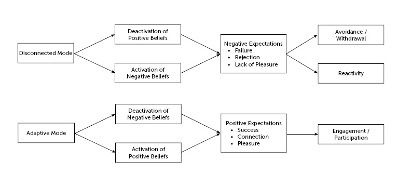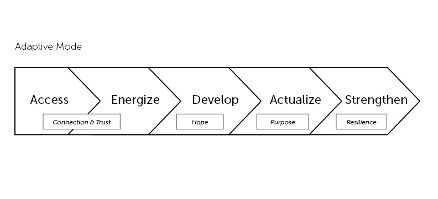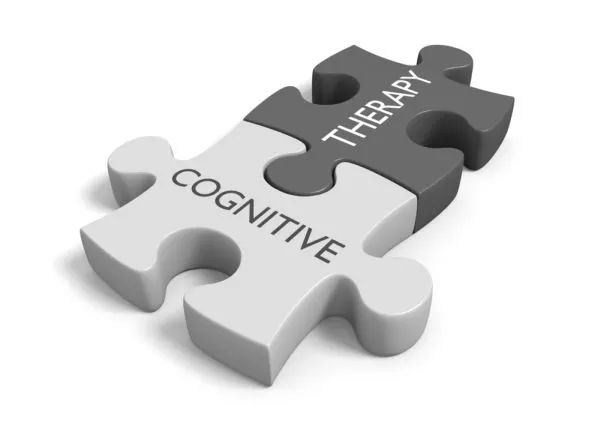Article
Transformative Wellness
Author(s):
Recovery-oriented cognitive therapy: a promising whole-person approach to improve lives for individuals with serious mental health challenges.
depression-vector-flower_MaryLong/Adobe Stock

Individuals who receive a serious mental health condition diagnosis such as schizophrenia die on average nearly 3 decades earlier than members of the general population.1 This increased mortality results from medical illnesses (eg, heart disease, kidney disease),2 and the empirically supported psychiatric treatments for schizophrenia (eg, pharmacotherapy, psychosocial rehabilitation, cognitive therapy for psychosis) show little efficacy to reverse it.3 Two of the most prominent social determinants of health and wellness—connection and purpose4,5—are frequently missing in the lives of individuals who receive a schizophrenia diagnosis. Poor prognosis is also associated with treatment dropout or lack of engagement in treatment.6
Recovery-oriented cognitive therapy,7 or CT-R, is expressly formulated to meet the call for more personally relevant and appealing treatment approaches.8 By focusing on personalized connection, active purpose, and the pursuit of one’s desired life, along with empowerment relative to life’s stressors,9 CT-R aims to promote a high quality of life and transformative wellness.
The CT-R approach includes practical strategies and interventions that comprise recovery-oriented treatment, which has been the mandate for care in the United States since the publication of the President’s New Freedom Commission on Mental Health report.10,11 As an action-based, whole-person approach, CT-R is applicable across the human age range and fits flexibly into the scope of practice of health professionals and paraprofessionals working in a wide variety of care delivery settings. CT-R has been implemented as an individual and group intervention; it has been the basis of milieu-based programming; it has guided treatment efforts of community-based teams; it has galvanized peer specialist work; and it has produced recovery-oriented care while maintaining safety in forensic contexts.12
Dr Beck’s 3 Guiding Ideas
We developed CT-R in partnership with Aaron Beck, MD. Three of Beck’s main contributions to medicine are hallmarks of the approach: the theory of modes,13,14 the cognitive model,15 and guided discovery.16
Modes and the cognitive model. CT-R theory embeds the cognitive model within the theory of modes (Figure 1) to create a whole-person understanding of how each individual flourishes (the adaptive mode) and how they can get caught up in myriad challenges (the disconnected mode).
Figure 1. CT-R Theory Embeds the Cognitive Model Within the Theory of Modes

CT-R is based on the clinical observation that anyone can quickly change between positively oriented and negatively oriented modes of living.
Providers can locate the adaptive mode by asking what an individual is like at their best: When is their affect brighter, their communication clearer, their energy enhanced? What are they doing in these times? Activating the adaptive mode makes positive beliefs—such as the ability to connect, contribute, and be valued—become more accessible, held with greater conviction, and prompt positive expectations for enjoyable, meaningful, or aspiration-driven action.
This positive cognitive triad (self, others, future) of the adaptive mode contrasts with the disconnected mode, which is dominated by greater activation of negative beliefs. In the disconnected mode, the individual may perceive themselves as incapable, disconnected, lacking purpose, or being broken. Consequently, they express negative expectations about the future (eg, “I won’t enjoy doing things” or “I can’t do anything”). They may respond to these beliefs with negative symptoms of withdrawal and isolation or with the reactive behavior of self-injury, aggression, or substance use. It is apparent when individuals are in the disconnected mode based on how they describe themselves, how they respond when presented with opportunities to engage in activities, or how dominant their psychiatric symptoms are, such as unduly attending to auditory hallucinations, expressing persecutory beliefs, or acting aggressively.
Positive action and guided discovery. At the start of treatment, the disconnected mode is easily activated, and the individual spends a disproportionate amount of time in it. CT-R strategies and interventions aim to make the individual’s best self actively dominate their experience. Guided discovery questions (eg, “what does that say about you?”) turn this positive action into personal meanings that empower the individual to grow and sustain the life of their choosing.
The experiential process begins in finding activities to do together to access the adaptive mode. Making these activities occur more often and adding others energizes it. Predictable shared activity makes CT-R appealing, enjoyable, and worth continuing. It also produces a meaningful connection and interpersonal trust—important wellness factors. Trust can be leveraged to develop the adaptive mode, a process by which the individual shares and enriches cherished, long-term life targets. This process inspires hope—another key wellness factor—and leads to activity that actualizes the meaning of the individual’s aspirations. In this way, the individual lives their values and experiences purpose every day—further accentuating wellness. Guided discovery can be employed at each of these steps—accessing, energizing, developing, and actualizing the adaptive mode—to help strengthen the individual’s best self, cultivating resilience and empowerment to sustain their desired life (Figure 2).
Figure 2. Accessing the Adaptive Mode to Strengthen the Individual’s Best Self

An Example of Empowerment Through CT-R
“Gloria” stays in her apartment all day and believes that she is being monitored by her household appliances. Having cut off communication with her family and friends, she relies on a case management team to drop off food and other basic needs at the door. Gloria’s team is trained in CT-R, and they decide to use it to guide their work with her.
Accessing and energizing. The team begins by asking themselves, “Why might it be that she will not let them in the door?” Team members guess that Gloria believes she has no control over the monitoring, and that she is fearful much of the time. If they are going to connect successfully with her, they will need to give her control and help her feel safe. Because members of the team share culture with Gloria, they hit on the idea of asking her about specific recipes. Initially, a team member goes to her door and asks low-pressure, choice-based questions about which type of seasoning to use (“cumin or cayenne?”). At the next visit, the team member tells her how delicious the dish turned out and draws her attention to how helpful and capable she is, asking for another cooking tip before leaving (“tostones or potatoes?”). Soon team members visit and ask more open-ended questions to learn about new recipes (“Tell me a dish you love that I have to try making”).
Gloria comes to expect the brief and predictable visits, waiting by the door with her next meal recommendation. The visits grow longer and more animated; each time, the team member gives feedback of culinary success and guides her to see how helpful and valued she is. After a few of these conversations, Gloria invites the first team member into her apartment, excited to show them furniture and family pictures. This becomes the new routine for the team: Gloria greets team members warmly and takes them inside; they listen to music from the old country, talk about friends and family, and make a meaningful dish from their culture together.
Developing. Gloria’s trust of the team indicates the time might be right to ask about aspirations. “If you weren’t here with me now cooking on a Tuesday at 11 AM, what would you want to be doing?” Taking a moment, Gloria smiles and said she would be teaching her grandchildren about their family history and singing songs with them that her grandparents taught her. In later visits, Gloria expresses a desire to reconnect with old friends and to volunteer at her church. Sensing a pathway to motivation and possibly to Gloria leaving her apartment, a team member asks Gloria for more details: “It sounds like teaching your grandchildren and doing things with them is really important to you. What would the best day with them look like? Paint me a picture—I would love to envision this how you see it!” Gloria describes the songs they would sing and how they could draw out the family tree with lots of vibrant colors.
The team member then asks: “What do you think would be the best part about doing this with your grandchildren?” Gloria initially seems uncertain how to respond. She had not thought about this in a long time, having written it off as impossible. The team member sharpens the question: “I imagine for some people the best part would be feeling productive and active. For others it would be connecting. Or maybe it’s about a value of traditions. Are any of those it for you, or maybe it’s something else?” Gloria enthusiastically responds: “It’s about family. Family is the most important thing you can have! Family and being connected to your people—your history.” “Doing good for others” and “having a place where I belong” are the values that underly reconnecting with friends and volunteering at church.
Actualizing. The positive emotion Gloria expresses when talking about her aspirations and values leads the team to expect that Gloria will want to discuss taking steps to do those things for real. In the next visit to her apartment, one of the team members asks about her aspirations. He checks in to make sure he has it right (what she wants and why). A smile comes to her face; Gloria agrees it is still very important to her. “What are some things anyone would need to do to feel a part of their family? Would this be teaching or doing something related to your shared culture? What do you think that would look like for you?”
They sit together and write down all the possible steps. All along the way, the team member refers to key details of Gloria’s aspiration to maintain the energy and momentum. Together, they create a path that meets Gloria where she is: watching a church service online and possibly setting up a video chat with her children.
Strengthening. At every step along the way, the team helps Gloria notice key meanings in what she is doing. During the early contacts, the team focuses on expanding frequency of activity and number of connections (“I really am enjoying this; how about you? Should we do it again?" “Would you want to do this with other members of the team?”). Over time, the team directs the focus to the success Gloria is having with them (“Wow, you really taught me how to season the dish better than ever; what does that say about you?” “You have to be a pretty good and patient teacher to help me, huh?”) Later, the team homes in on the link between current actions and Gloria’s aspirations (“Every day we get up, log into church services, and make a meal together gets you closer to teaching your grandchildren, volunteering, and connecting with friends—what do you think?”).
An important part of strengthening the adaptive mode is resilience (“I know it was not always easy to feel safe and comfortable letting us come in, and here we are each week cooking more and getting better. I wonder if it’s sometimes worth taking a risk as things might go better than you first think they will?”). Throughout this process, Gloria sees herself as increasingly more capable, valuable, connected, and safe.
Emerging Evidence
Like all empirically supported approaches, the evidence base for CT-R is emerging. Extensive, multimethod literature supports the conceptual model of the negative beliefs of thedisconnected mode for individuals who receive a diagnosis of schizophrenia.17 The positive beliefs of the adaptive mode are just beginning to find support in the literature.18,19 A randomized-controlled trial featuring blind raters supports the efficacy of CT-R over standard care in the community to improve functional outcomes, reduce avolition-apathy, and lower positive symptoms,20 and gains were maintained over a follow-up period where the therapy was withdrawn.21 In program evaluation studies, CT-R has been associated with reduction in the use of coercive control methods,22 an increase in number of days in the community, an increase in hope, and the achievement of at least 1 Substance Abuse and Mental Health Services Administration (SAMHSA) recovery dimension.12
Concluding Thoughts
CT-R provides practical strategies and interventions to promote desired lives, reduce mortality, and enhance thriving in the face of life’s often very difficult challenges. It is readily learned and produces observable progress, as illustrated by Gloria’s course of treatment. Collaborative action produces a richer, desired life, empowered for vexing challenges. CT-R closes the distance between individuals who receive serious mental health diagnoses and everyone else.
Dr Grant is director of research, innovation, and practice at the Beck Institute Center for Recovery-Oriented Cognitive Therapy (CT-R). With Aaron T. Beck, MD, he originated CT-R and conducted foundational research to validate it. He is the co-author of Recovery-Oriented Cognitive Therapy for Serious Mental Health Conditions and Schizophrenia: Cognitive Theory, Research, and Therapy.
Dr Inverso is director of clinical training and implementation at Beck Institute Center for Recovery-Oriented Cognitive Therapy. A co-developer of CT-R, she has created transformative CT-R programming for psychiatric inpatient units, programmatic residences, schools, and community teams, with special focus on adolescents and young adults, individuals engaging in extreme forms of self-injury, individuals considering transitions into the community following extended periods of institutionalization, and families. Along with Aaron T. Beck, MD, and colleagues, she is co-author of Recovery-Oriented Cognitive Therapy for Serious Mental Health Conditions.
References
1. Lee EE, Liu J, Tu X, et al. A widening longevity gap between people with schizophrenia and general population: A literature review and call for action. Schizophr Res. 2018;196:9-13.
2. Saha S, Chant D, McGrath J. A systematic review of mortality in schizophrenia: is the differential mortality gap worsening over time? Arch Gen Psychiatry. 2007;64(10):1123-1131.
3. Scull A. American psychiatry in the new millennium: a critical appraisal [published online ahead of print, 2021 Jun 23]. Psychol Med. 2021;1-9.
4. Harding KJ. The Rabbit Effect: Live Longer, Happier, and Healthier With Groundbreaking Science of Kindness. Atria Books; 2019.
5. Murthy VH. Together: The Healing Power of Human Connection in a Sometimes Lonely World. Harper-Collins; 2020.
6. Kreyenbuhl J, Nossel IR, Dixon LB. Disengagement from mental health treatment among individuals with schizophrenia and strategies for facilitating connections to care: a review of the literature. Schizophr Bull. 2009;35(4):696-703.
7. Beck AT, Grant P, Inverso E, et al. Recovery-Oriented Cognitive Therapy for Serious Mental Health Conditions. Guildford Press; 2021.
8. Dixon LB, Holoshitz Y, Nossel I. Treatment engagement of individuals experiencing mental illness: review and update [published correction appears in World Psychiatry. 2016 Jun;15(2):189]. World Psychiatry. 2016;15(1):13-20.
9. Cohen AN, Hamilton AB, Saks ER, et al. How occupationally high-achieving individuals with a diagnosis of schizophrenia manage their symptoms. Psychiatr Serv. 2017;68(4):324-329.
10. Hogan MF. The President’s New Freedom Commission: recommendations to transform mental health care in America. Psychiatr Serv. 2003;54(11):1467-1474.
11. Davidson L, Rakfeldt J, Strauss J. The Roots of the Recovery Movement in Psychiatry: Lessons Learned. John Wiley & Sons; 2011.
12. Grant PM. Recovery-oriented cognitive therapy: a theory-driven, evidence-based transformative practice to promote flourishing for individuals with serious mental health conditions that is applicable across mental health systems. National Association of State Mental Health Program Directors; 2019.
13. Beck AT, Haigh EA. Advances in cognitive theory and therapy: the generic cognitive model. Annu Rev Clin Psychol. 2014;10:1-24.
14. Beck AT, Finkel MR, Beck JS. The theory of modes: applications to schizophrenia and other psychological conditions. Cogn Ther Res. 2021;45:391-400.
15. Beck AT. Thinking and depression. I. idiosyncratic content and cognitive distortions. Arch Gen Psychiatry. 1963;9:324-333.
16. Beck AT, Rush AJ, Shaw BF, Emory G. Cognitive Therapy of Depression. Guilford Press; 1979.
17. Beck AT, Himelstein R, Grant PM. In and out of schizophrenia: activation and deactivation of the negative and positive schemas. Schizophr Res. 2019;203:55-61.
18. Grant PM, Perivoliotis D, Luther L, et al. Rapid improvement in beliefs, mood, and performance following an experimental success experience in an analogue test of recovery-oriented cognitive therapy. Psychol Med. 2018;48(2):261-268.
19. Grant PM, Best M. It is always sunny in Philadelphia: the adaptive mode and positive beliefs as a new paradigm for understanding recovery and empowerment for individuals with serious mental health challenges. Presented at the International CBT (Cognitive Behavioral Therapy) for Psychosis Annual Meeting; 2019.
20. Grant PM, Huh GA, Perivoliotis D, et al. Randomized trial to evaluate the efficacy of cognitive therapy for low-functioning patients with schizophrenia. Arch Gen Psychiatry. 2012;69(2):121-127.
21. Grant PM, Bredemeier K, Beck AT. Six-month follow-up of recovery-oriented cognitive therapy for low-functioning individuals with schizophrenia. Psychiatr Serv. 2017;68(10):997-1002.
22. Chang NA, Grant PM, Luther L, Beck AT. Effects of a recovery-oriented cognitive therapy training program on inpatient staff attitudes and incidents of seclusion and restraint. Community Ment Health J. 2014;50(4):415-421.





